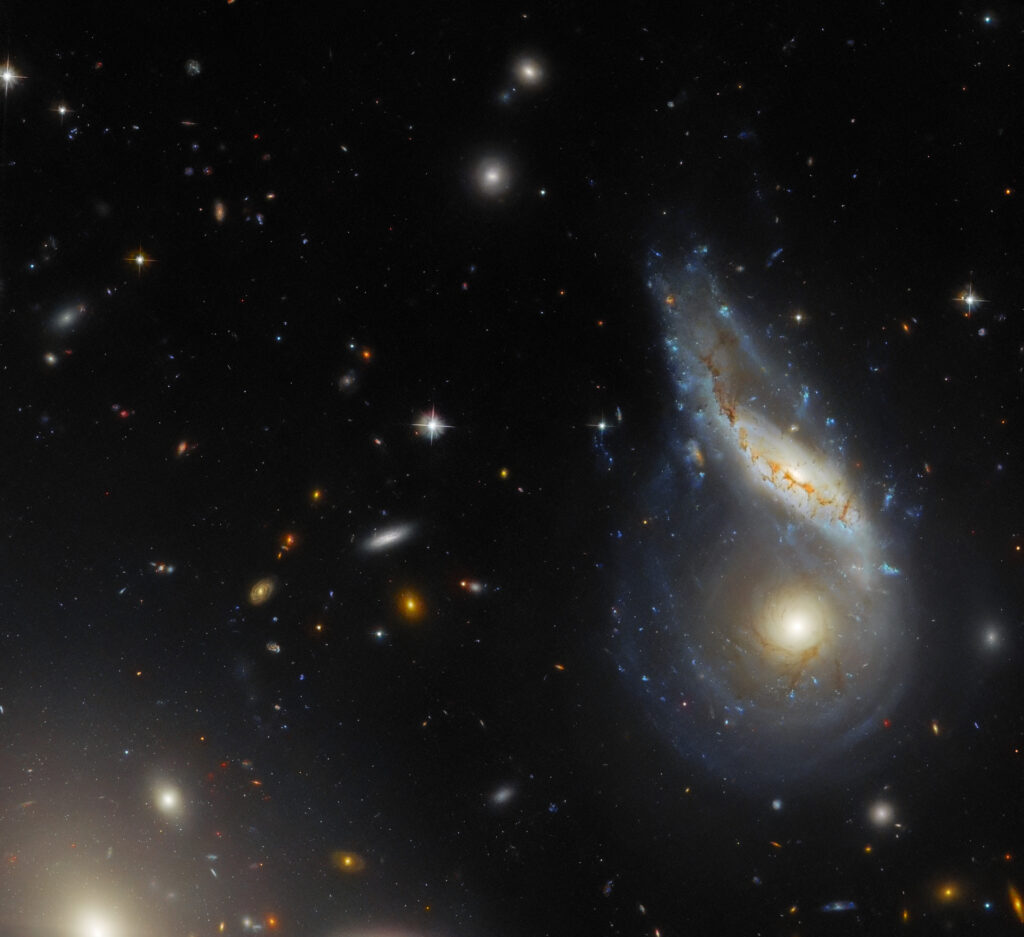The Hubble mission team has released a new image. It demonstrates the dramatic consequences of the collision of two galaxies.

The colliding pair is captured on the right side of the picture. It consists of NGC 6040 (a curved spiral galaxy visible from the edge) and LEDA 59642 (a spiral galaxy facing the Earth). These galaxies are located at a distance of 570 million light-years from the Solar System. In the lower left corner, you can also see part of the elliptical galaxy NGC 6041, which is a component of the same cluster as NGC 6040 and LEDA 59642. But it does not participate in the collision in any way.
Galaxy collisions are among the most monumental events in the Universe, during which a large amount of energy is released, and the objects involved change beyond recognition. Powerful gravitational interactions condense gas and dust clouds, provoking bursts of star formation and also destroying the original spiral structures. It is believed that the product of the merger is usually more “simple” elliptical galaxies.
At the same time, it should be understood that due to the huge distances, such events unfold on a gigantic, by human standards, time scale. For example, in the future, our Milky Way will collide with the Andromeda galaxy. But this event will begin only after four billion years, and the very process of collision and subsequent merging into a single object will take hundreds of millions more years.
Earlier, we talked about the powerful storms found by Hubble in the atmosphere of the “hot Jupiter” WASP-121b.
According to https://esahubble.org
Follow us on Twitter to get the most interesting space news in time
https://twitter.com/ust_magazine


